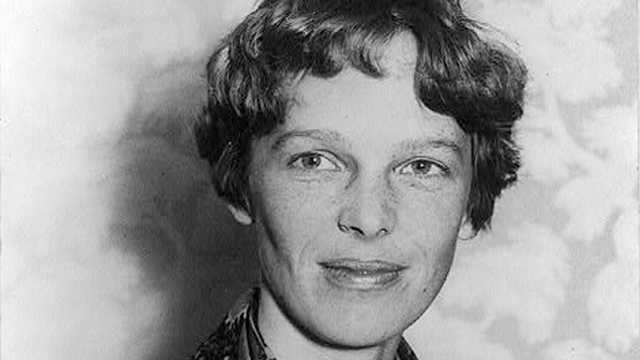St. Patrick’s Day, celebrated on March 17th each year, is a global holiday that honors St. Patrick, the patron saint of Ireland, and celebrates Irish culture, heritage, and history. From humble religious origins, the day has evolved into a lively celebration of all things Irish, marked by parades, wearing green, and enjoying Irish food and drink. But how did St. Patrick’s Day come to be, and why is it celebrated the way it is today? Let’s take a look at the holiday’s origins and how it became the global celebration it is now.
The Origins of St. Patrick’s Day
St. Patrick’s Day traces its roots to St. Patrick, who was born in Britain in the late 4th century and brought to Ireland as a slave at the age of sixteen. After escaping slavery and returning to his family, St. Patrick later became a missionary in Ireland, spreading Christianity throughout the country. He is credited with converting the Irish people to Christianity and using the shamrock, a three-leafed plant, to explain the Christian Holy Trinity of the Father, Son, and Holy Spirit. This symbolic use of the shamrock has become one of the enduring symbols of St. Patrick’s Day.
St. Patrick died on March 17th, 461 AD, and this day became associated with him as a feast day in the Christian liturgical calendar. The day was originally celebrated as a religious occasion in Ireland, marking St. Patrick’s death and honoring his contributions to the spread of Christianity.
The Evolution of St. Patrick’s Day
Although St. Patrick’s Day was initially observed as a religious feast day in Ireland, the global celebration of the holiday began much later, particularly as Irish immigrants began to settle in different parts of the world. The Irish population in countries like the United States and Canada, especially those who had faced hardships such as the Great Famine of the mid-19th century, used the holiday as a way to celebrate their heritage and connect with one another.
The first St. Patrick’s Day parade is believed to have taken place in New York City in 1762, organized by Irish soldiers serving in the British Army. The parade became an annual event, and over time, St. Patrick’s Day in the U.S. grew to include celebrations of Irish culture with parades, music, dancing, and wearing green to symbolize the Irish landscape and to honor St. Patrick.
The United States played a significant role in transforming St. Patrick’s Day from a religious observance into a broader celebration of Irish identity. Today, cities across the world, especially in the U.S., hold massive parades, and landmarks are often lit up in green to mark the occasion.
St. Patrick’s Day Around the World
St. Patrick’s Day is now celebrated not only in Ireland and the United States but across the globe. In many countries, Irish communities and their descendants continue to celebrate the holiday, while non-Irish people also partake in the festivities as a fun way to enjoy Irish culture. Here are a few examples of how St. Patrick’s Day is celebrated around the world:
- Ireland: In Ireland, St. Patrick’s Day is a national holiday marked by parades, festivals, and religious services. The day was historically more solemn, but in recent years it has become a colorful and festive occasion with celebrations in every city and town.
- United States: In cities with large Irish populations, such as New York, Boston, and Chicago, St. Patrick’s Day parades are massive events that draw millions of people. Chicago even dyes its river green to mark the occasion, a tradition that has become internationally famous.
- Australia: In Australia, where many Irish immigrants settled, St. Patrick’s Day is widely celebrated with parades, parties, and Irish music festivals, especially in cities like Sydney and Melbourne.
- Other Countries: St. Patrick’s Day is also celebrated in countries like Canada, Argentina, and Japan, with public celebrations, parades, and Irish-themed events. In some places, landmarks are illuminated in green, a nod to the tradition of wearing green to mark the occasion.
Symbols of St. Patrick’s Day
One of the most iconic symbols of St. Patrick’s Day is the shamrock. St. Patrick is said to have used the three-leafed plant to explain the concept of the Holy Trinity to the Irish people. Over time, the shamrock became closely associated with Ireland and its national identity, and it is now a widely recognized symbol of the holiday.
Another popular symbol is the color green, which represents Ireland’s lush, green landscape. Wearing green on St. Patrick’s Day is not only a way to show pride in Irish heritage but also a playful tradition. The color green is also linked to the belief that wearing it makes you invisible to leprechauns, mischievous fairies from Irish folklore who are said to pinch anyone not wearing green.
St. Patrick’s Day Traditions
St. Patrick’s Day is filled with a variety of fun traditions, both old and new. These include:
- Parades: One of the most famous traditions associated with St. Patrick’s Day is the parade. Large-scale parades can be found in cities around the world, with floats, marching bands, bagpipers, and dancers.
- Food and Drink: Traditional Irish foods like corned beef and cabbage are enjoyed on St. Patrick’s Day. In the U.S., many people enjoy a hearty meal of corned beef, potatoes, and cabbage. Irish pubs and restaurants also serve up drinks such as Guinness beer, Irish whiskey, and the signature Irish coffee.
- Dyeing Food and Drink Green: In some parts of the world, such as Chicago, people dye food and beverages green for the occasion. From green-colored milkshakes to dyed beer, this fun tradition has become a common way to celebrate the holiday.
- Music and Dancing: Irish folk music and traditional Irish dancing are key elements of the festivities. Many celebrations include performances of Irish dancers and musicians, adding to the celebratory atmosphere.
Conclusion
St. Patrick’s Day, once a solemn religious observance, has evolved into a global celebration of Irish culture and heritage. From its origins in Ireland to the parades and festivities in the United States and beyond, the holiday continues to bring people together to celebrate everything Irish. Whether through the wearing of green, enjoying Irish food and drinks, or simply participating in a parade, St. Patrick’s Day is a joyous occasion that transcends national borders and fosters a sense of global community. Today, it serves as a reminder of Ireland’s rich cultural history and the enduring legacy of St. Patrick, who brought Christianity to the Emerald Isle.







What do you think?
Show comments / Leave a comment